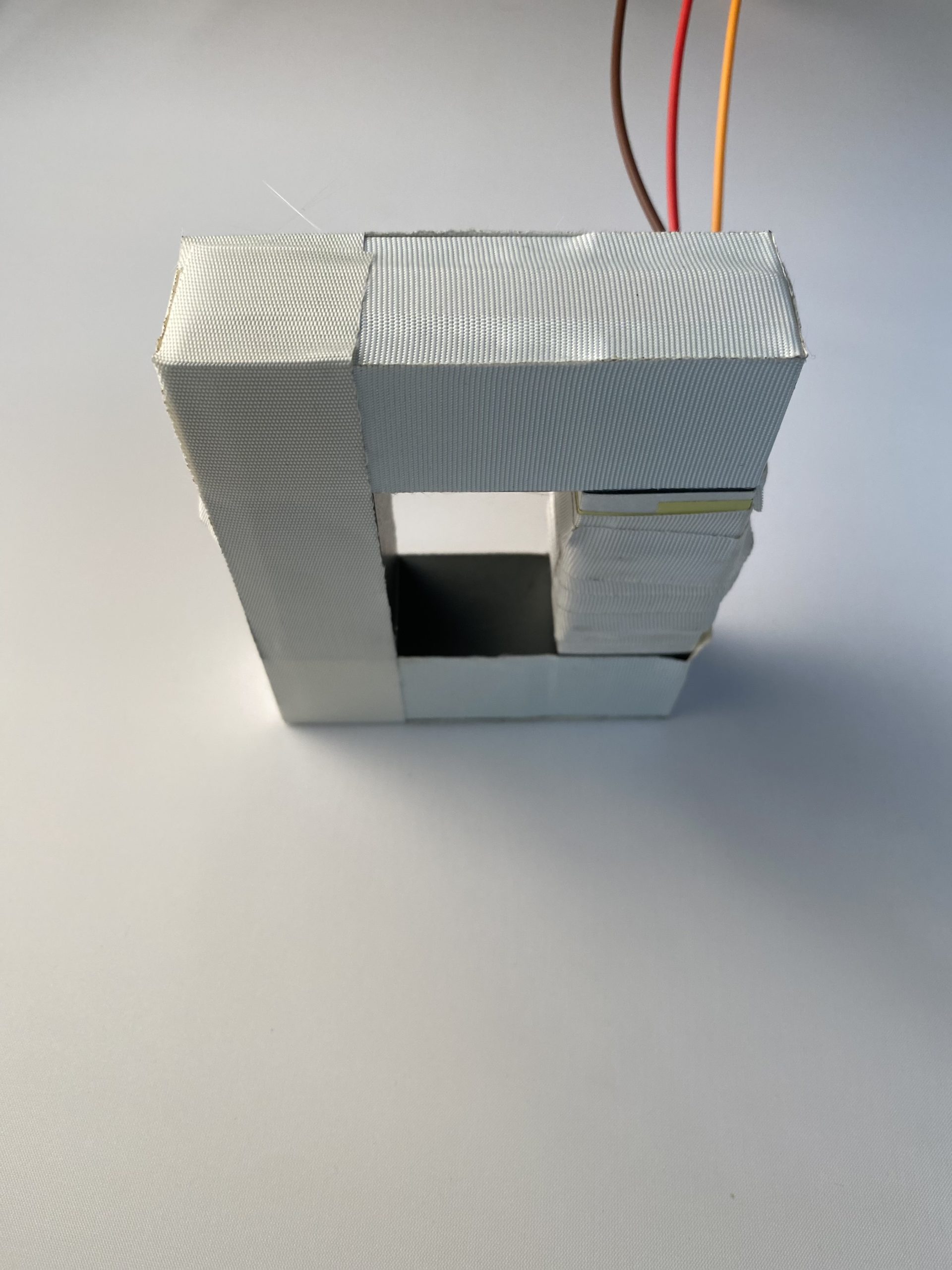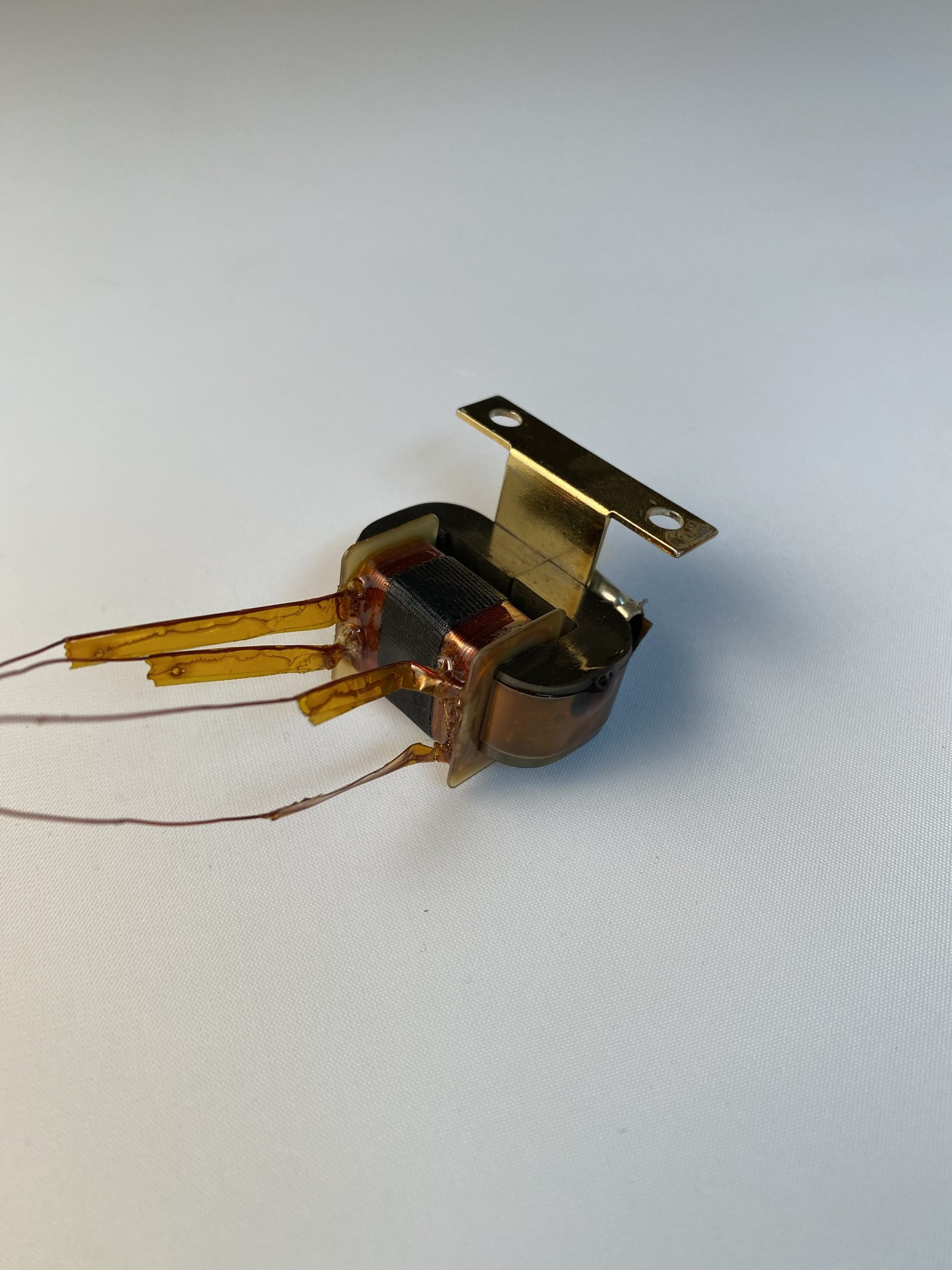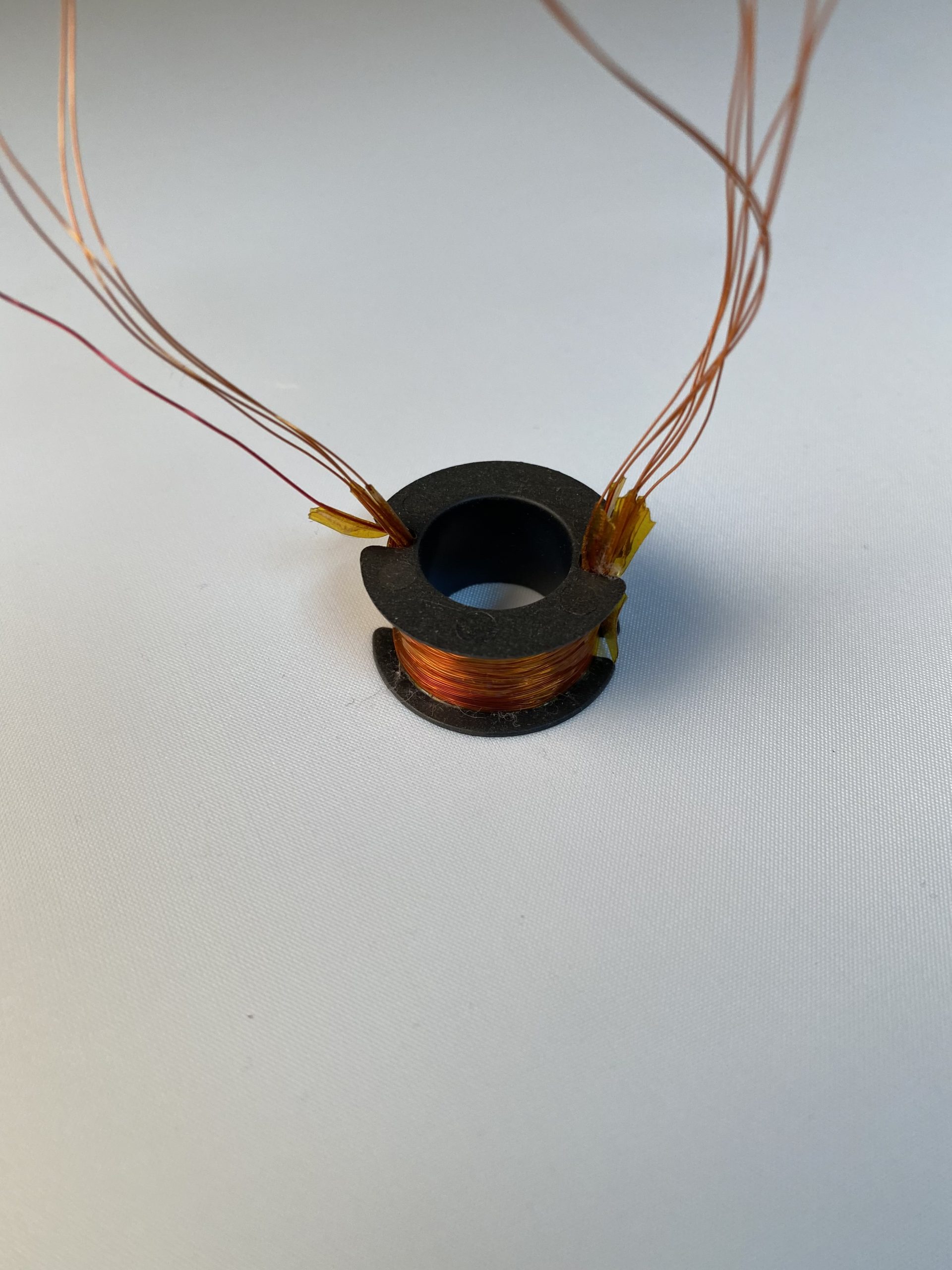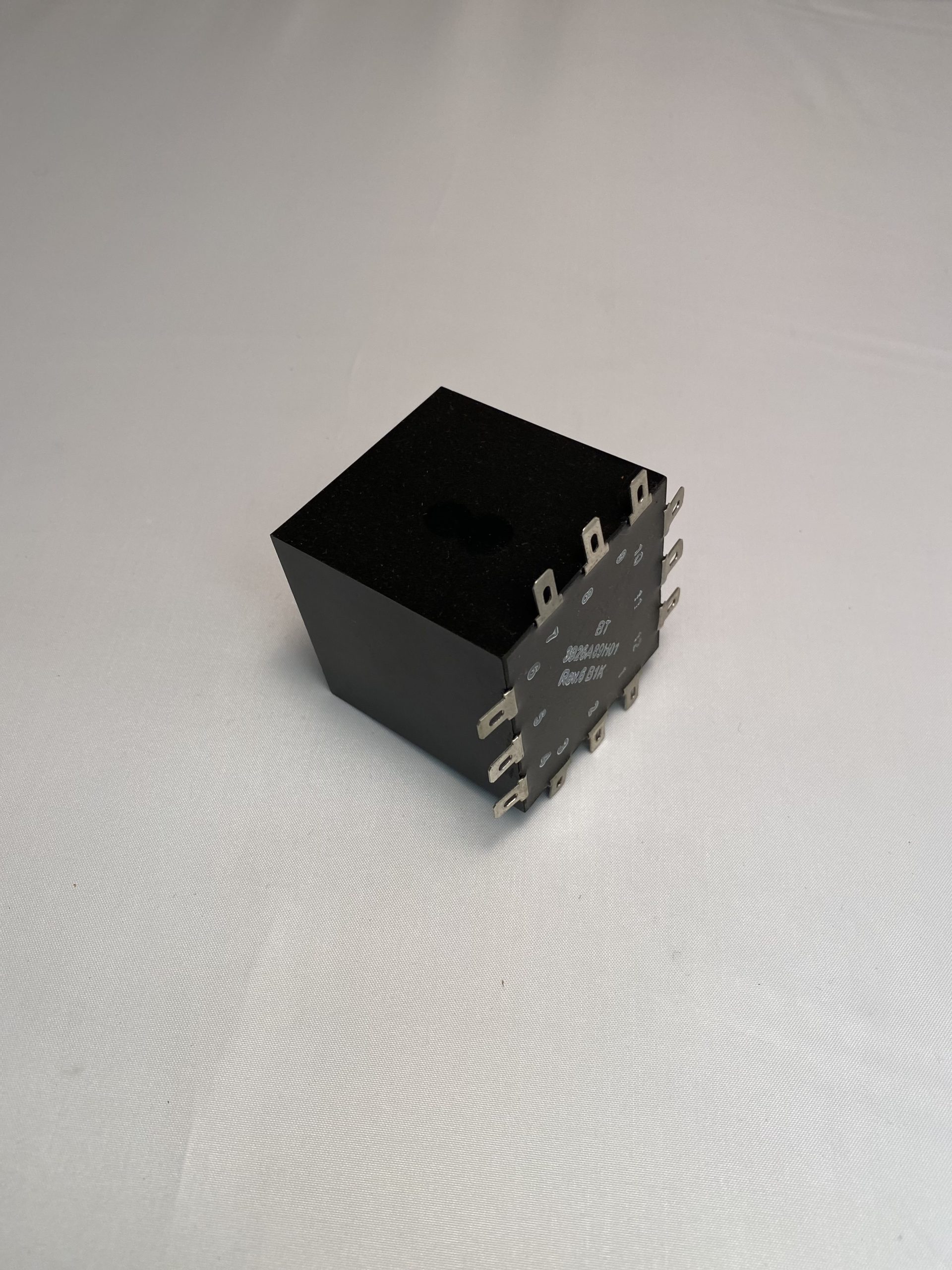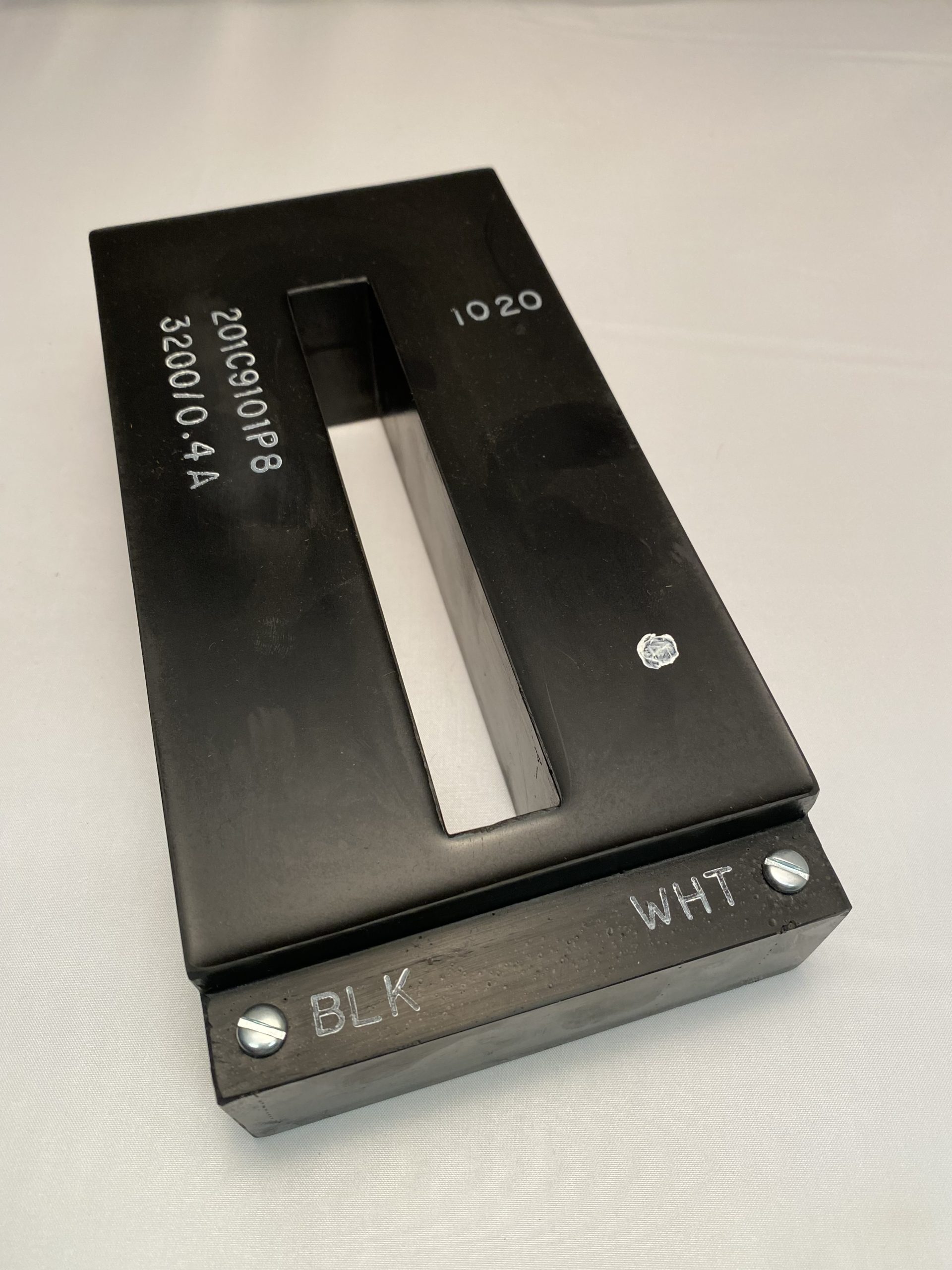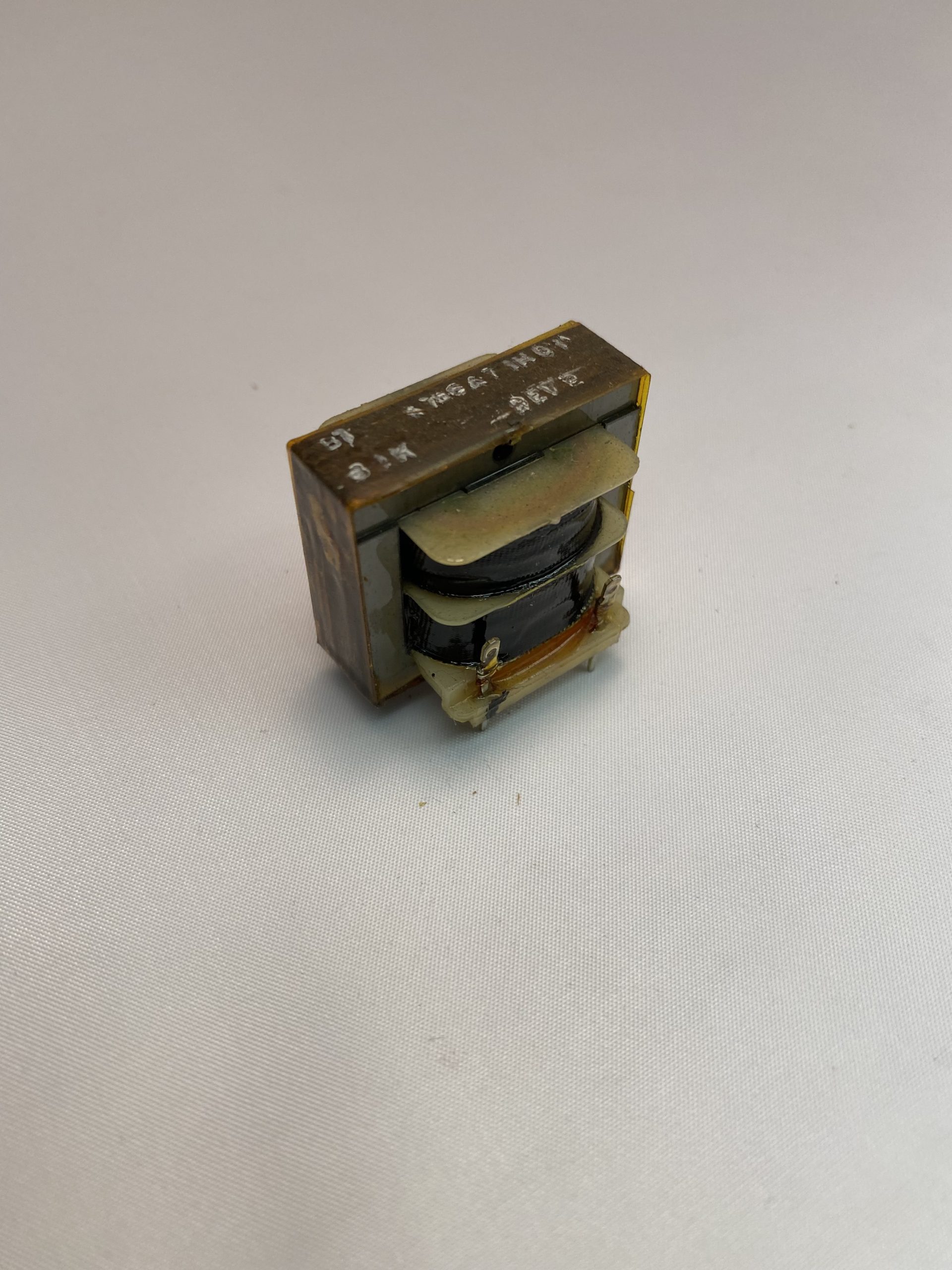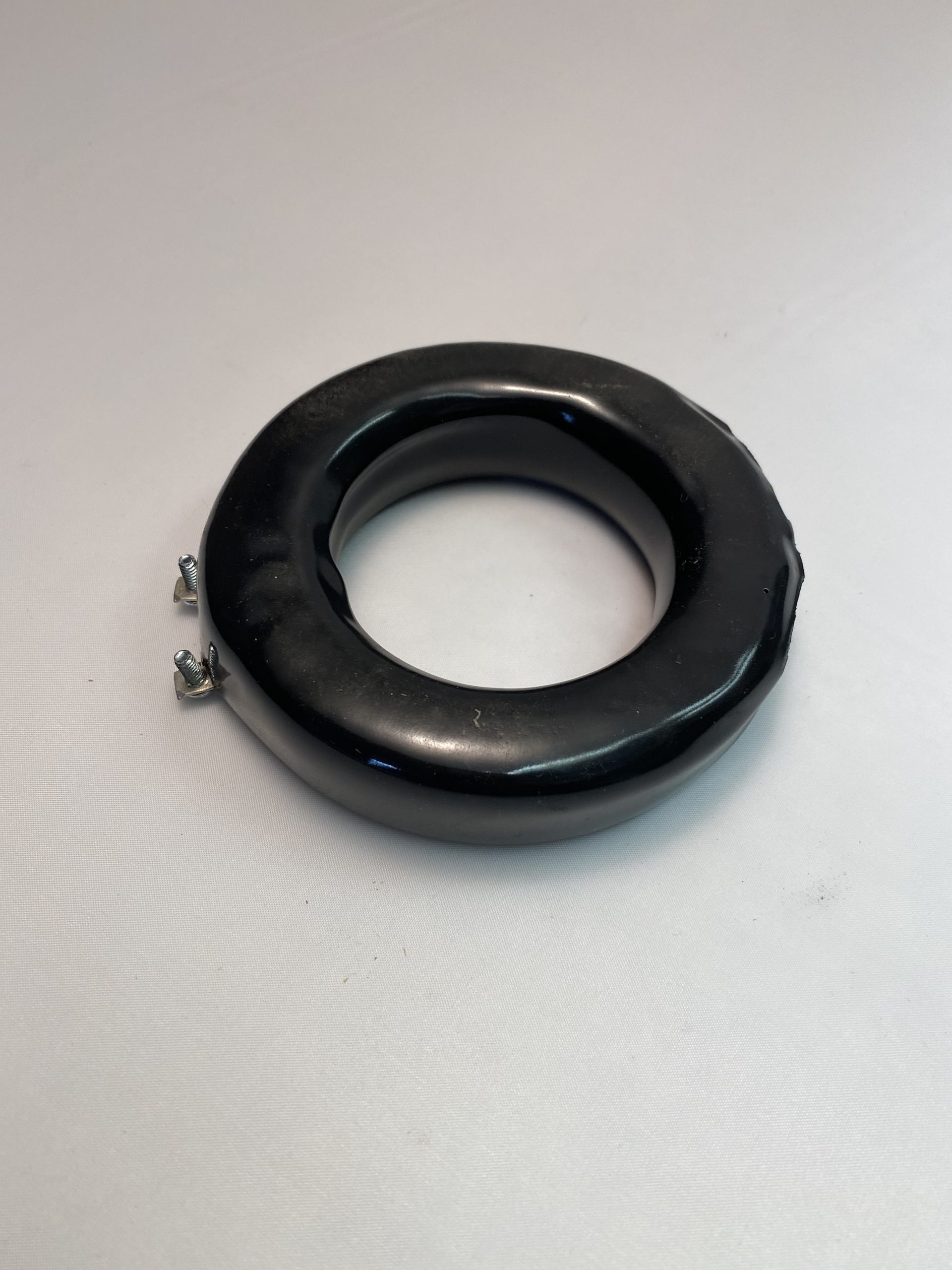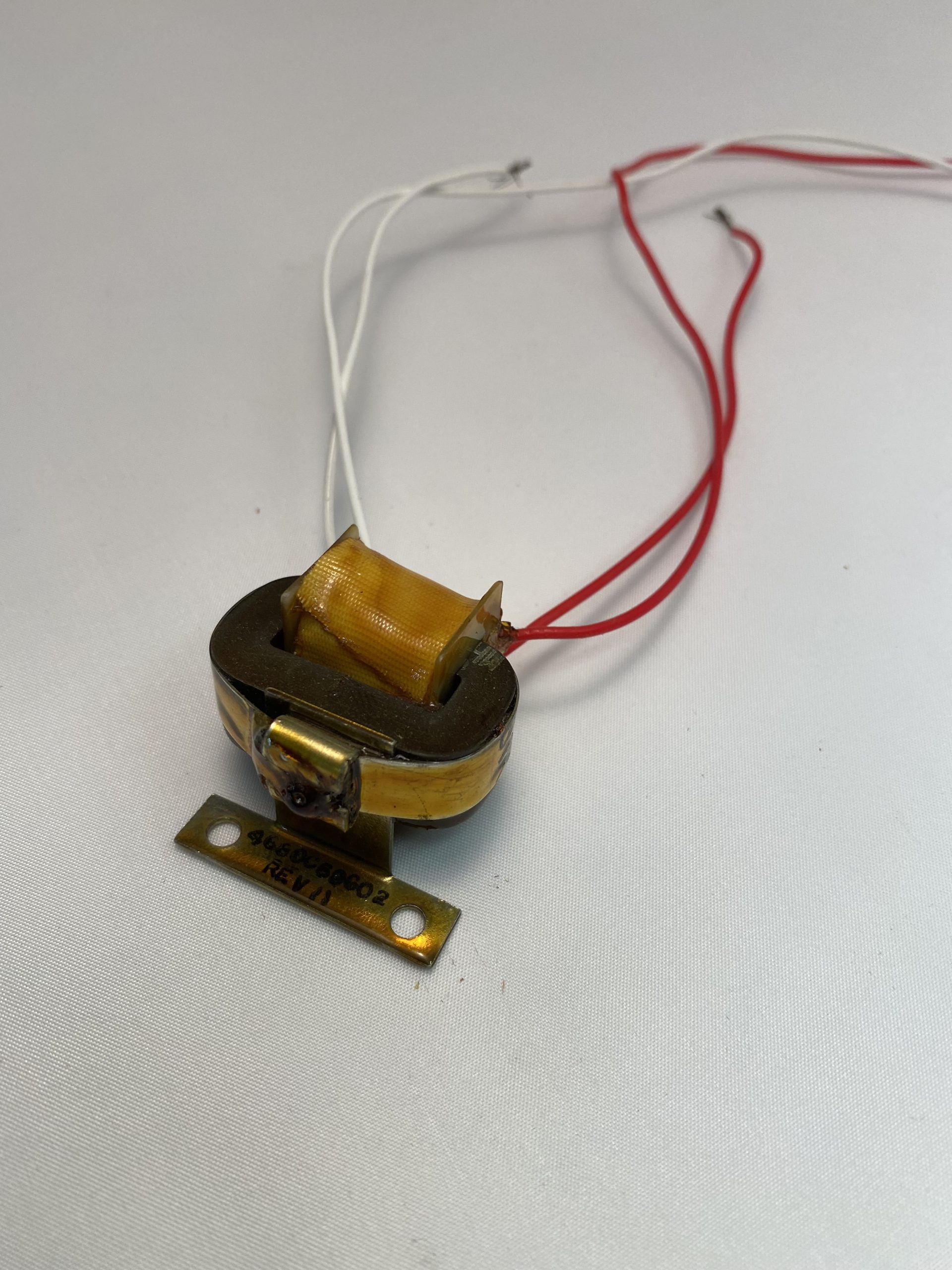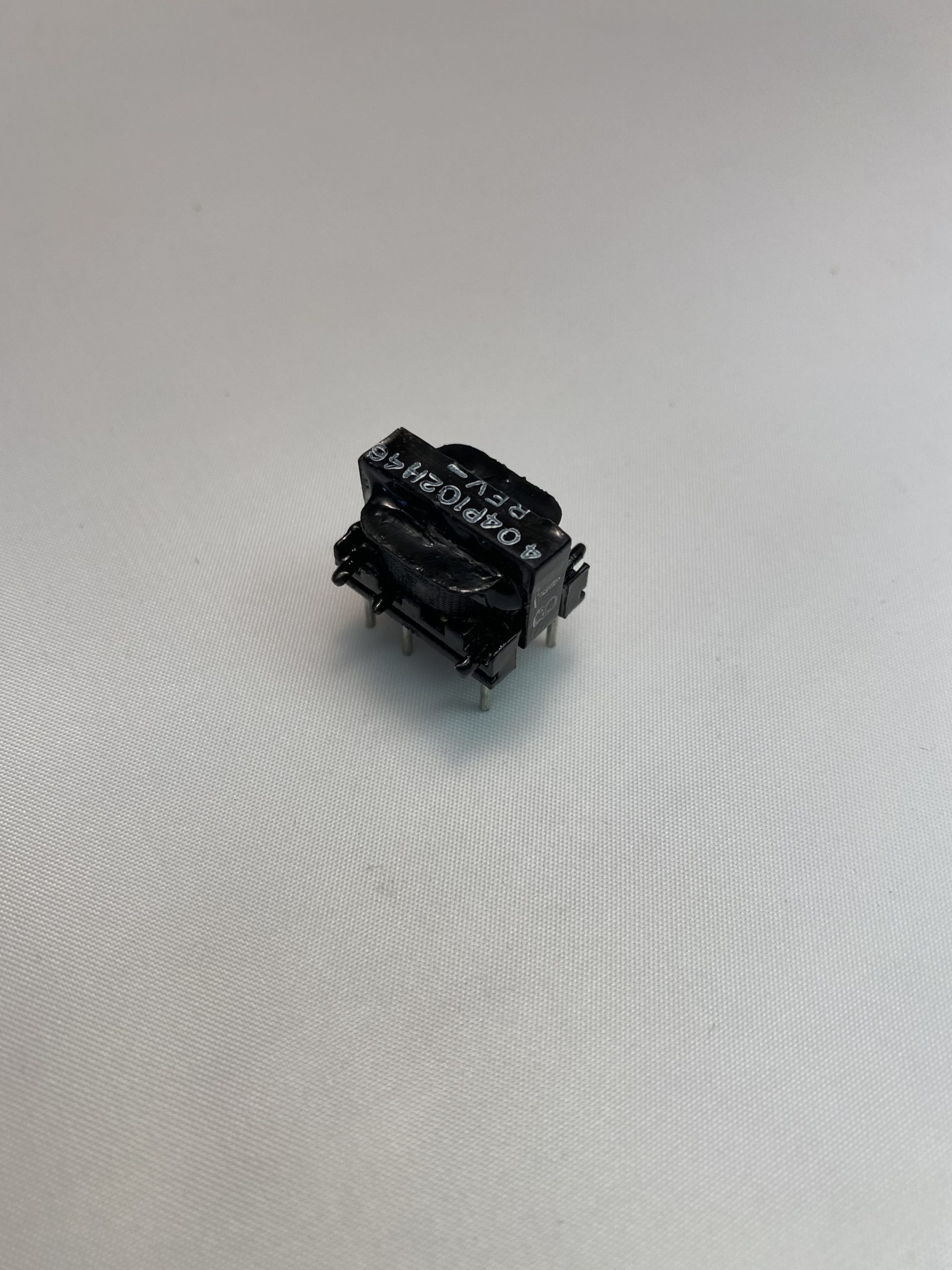Custom Transformers
Custom Transformers and Electromagnetic Design Solutions
Dufrane specializes in producing Custom Transformers and Custom Coils and Windings to meet your specific needs, based on an understanding of your project. Whether your need is based on size or envelope restrictions, output/input requirements, hardware and connection requirements, environmental sealing and/or encapsulation – or a combination of all of them — we can help you.
Custom Transformer Types
We have experience with dry Transformers of all types, from tiny board-mounted units all the way UP to 50KVA – and all are available from Dufrane:
Step Up and Step Down Transformers are most commonly used for increasing low AC voltages at high current (a step-up transformer) or decreasing high AC voltages at low current (a step-down transformer) in electric power applications, and for coupling the stages of signal-processing circuits.
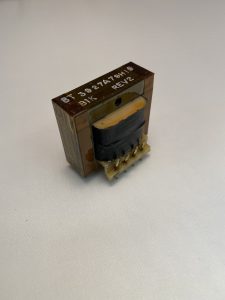
A pulse transformer transmits rectangular electrical pulses. A pulse transformer needs to have low values of leakage inductance and distributed capacitance, and a high open-circuit inductance to reduce distortion of the pulse shape. A low coupling capacitance between the primary and secondary is necessary to protect the circuitry on the primary side from high-powered transients created by the load. For the same reason, high breakdown voltage and high insulation resistance and are necessary features of a well-designed Pulse Transformer.
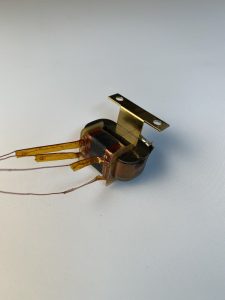
A power transformer is the most common type of custom transformer, often used to convert main voltage to low voltage in order to provide required power to electronic devices and system components. They are available in power ratings ranging from a few mW to MW. The insulated laminations minimizes eddy current losses in the iron core.
Small Power transformers may use a split bobbin, giving a high level of insulation between the windings. The rectangular cores are made up of stampings, often in E-I shape pairs, but other shapes are sometimes used in the design of power transformers.
An isolation transformer doesn’t provide a metallic conductive path between circuits, instead linking two circuits electromagnetically. This could be required in a power supply for medical equipment, or other high integrity applications, particularly in military systems, to prevent any leakage from the AC power system into other systems (a patient, for example).
Control transformers are generally used when a circuit requires constant voltage or constant current with a low power rating. Various filtering devices, such as capacitors, are used to minimize the variations in the output. This results in a more constant voltage or current.
An autotransformer is a custom transformer which only utilizes one winding that is tapped at a calculated point along the winding. Voltage is applied across a terminal of the winding, and a higher (or lower) voltage is produced by design across another portion of the same winding. The equivalent power rating of the autotransformer is lower than the actual load power rating.
A single-phase transformer is used to either step-up or step-down the voltage at the output. This custom transformer is typically a power transformer with high-efficiency and low losses and is used frequently for small systems and even appliances. Depending on the application, the single-phase transformer is used to either step-up OR step-down voltage at the output. Often a power transformer for example is a Single phase transformer with high-efficiency and low losses.
3-Phase transformers play a key role in long distance power distribution, regional grids, local grids, industrial and business facilities. 3-Phase power transformers by design are constructed by winding three single phase transformers on a single core. The 3-Phase transformer design allows copper and core to be used more efficiently, so 3-Phase transformers will be more compact, more cost effective, and lighter than three individual single-phase transformers.
Normally, 3-Phase transformers have at least 6 windings – 3 primary windings and 3 secondary windings.
How do we customize Transformers?
We have developed a reputation due to the following Custom Transformer and Custom Winding capabilities:
-
Transformer Design Team
We have the right team, experience, technology, and equipment to design and build custom transformers of all types to almost any specification. Our staff of Transformer and Electromagnetic engineers will come up with the right solution for you.
-
Project Management Approach
We work to understand your application and work as a preferred teammate to help you achieve the performance results you need, and we employ a project management approach beginning with the quote process to help you achieve on-time delivery of a quality custom transformer.
-
Military Specifications
Dufrane has the ability to produce custom transformers and electromagnetic solutions to meet Military specifications based on dozens of Military program successes.
-
Transformer Winding Equipment
Dufrane has a range of state-of-the-art winding machines, arbors, and winding mandrels available to us for the coil winding process to ensure precision. Our winding technologies and processes ensure that even coils with high turn counts can be wound to meet a given specification.
-
Advanced Winding Techniques
We have developed proprietary techniques that allow us to wind custom-shaped and sized electromagnetic coils up to 24” in diameter, with plans to increase this size.
-
Specialized Transformer Materials and Processes
We use bondable wires when producing our custom transformers and coils. This allows us to meet almost any operating current requirement. These bonded coils are an alternative to a bobbin-wound coil and perform better in certain applications. In addition, we have the capability to seal with VPI techniques and typically employ epoxy encapsulation techniques and design our own tools and molds to support this.
-
The best suppliers
We work only with approved suppliers for sourcing raw materials such as copper, steel, ferrite, wire, epoxies, tapes, connectors and components such as housings, terminals, taps, etc. This helps us maintain the quality of final assembly.
-
In-House Machining
We have our own in-house machining capabilities and often produce custom machined components to add value to the finished assembly.

